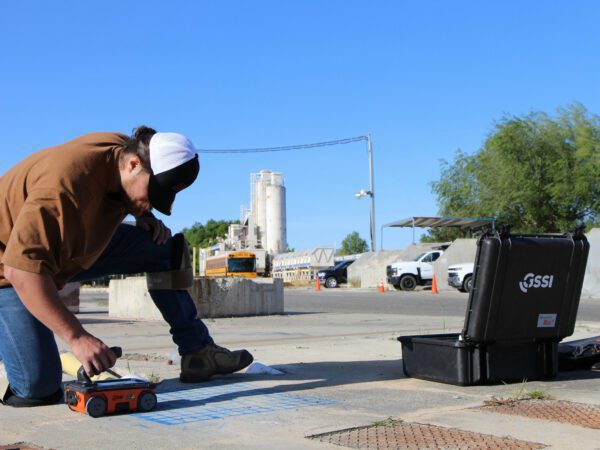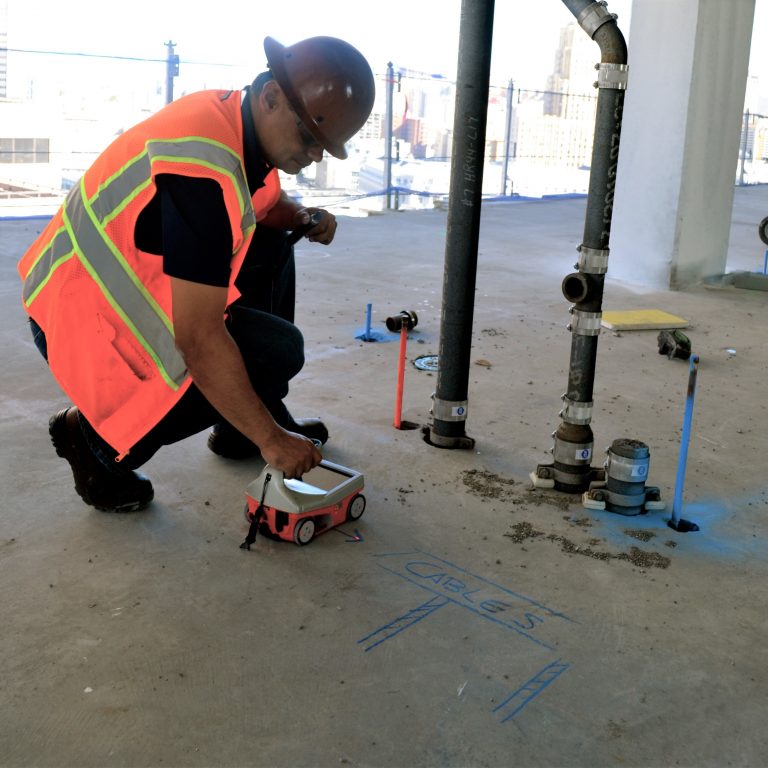Neighborhood RainierGPR Service Areas for Accuracy Concrete Scanning
Neighborhood RainierGPR Service Areas for Accuracy Concrete Scanning
Blog Article
Concrete Scanning: An Essential Step In The Direction Of Making Sure Architectural Stability and Security
In the realm of building and infrastructure maintenance, the relevance of concrete scanning can not be overemphasized. By employing advanced modern technology and methods, concrete scanning offers as an essential tool in guaranteeing that the honesty and safety of bridges and structures are maintained to the highest possible standards.
Value of Concrete Scanning
Concrete scanning plays a critical function in making sure the structural stability and security of buildings and facilities jobs. By using innovative modern technologies such as ground-penetrating radar (GPR) and electro-magnetic induction, professionals can non-destructively examine concrete structures to find possible issues, gaps, ingrained things, and support layout. This process allows early detection of anomalies that might endanger the stability of a framework, avoiding pricey problems and guaranteeing the security of passengers.
Before boring, cutting, or coring into concrete, scanning assists determine the specific areas of rebar, post-tension cables, and various other embedded aspects, lowering the threat of accidental hits that can lead to structural weak points. Furthermore, concrete scanning aids in top quality control by verifying the density of concrete covers and detecting any type of disparities that might affect the total longevity of the framework.
Innovation for Concrete Inspection

Advantages of Early Detection
Timely discovery of architectural problems can dramatically minimize threats and make sure the longevity of building projects. By identifying prospective troubles beforehand in the building process, stakeholders can take aggressive actions to resolve issues prior to they intensify into larger and extra costly problems. One of the key advantages of very early detection is the prevention of structural failings, which can position major safety risks and bring about task hold-ups and financial losses.
Moreover, very early detection allows for prompt repair services and maintenance, which can help prolong the lifespan of the structure. By addressing concerns immediately, construction teams can stay clear of costly repair work and even the requirement for early substitute of architectural components. This proactive technique not just saves money and time however likewise improves the total safety and security and resilience of the building job.
Furthermore, very early discovery can enhance task planning and decision-making by giving stakeholders with important understandings into the condition of the structure. Armed with this details, project managers can make informed selections regarding building methods, materials, and timelines, causing extra effective and successful job outcomes.
Making Certain Structural Security
Guaranteeing the architectural stability of a building and construction job is paramount to its safety and security and longevity. Structural security refers to the ability of a building or infrastructure to preserve its type and feature under numerous lots and ecological conditions. To attain this, extensive analysis and monitoring of the framework are essential. Concrete scanning plays a critical role in ensuring architectural security by discovering prospective problems such as gaps, delamination, or support deterioration that could endanger the integrity of the framework in time.
By utilizing advanced scanning technologies like ground-penetrating radar (GPR) and electro-magnetic induction, construction experts can non-invasively evaluate concrete frameworks to determine areas of issue below the surface area. This positive method permits the early detection of weaknesses or issues, allowing timely repairs or reinforcement to stop structural failings.
Normal concrete continue reading this scanning during different construction stages and throughout the life process of a framework can aid maintain its security, minimize risks, and ensure the security of residents. By prioritizing structural stability via concrete scanning, construction projects can boost their strength and sturdiness, eventually adding to greater security and longevity.

Avoiding Vital Failings
To safeguard against devastating events, careful surveillance and proactive upkeep are critical in averting critical failures within structural frameworks. Spotting possible concerns before they escalate is crucial to stopping architectural failures. Carrying out routine examinations, such as concrete scanning, can reveal covert defects like gaps, fractures, or deterioration that might endanger the honesty of a framework. By utilizing sophisticated scanning technologies like Ground Penetrating Radar (GPR) or Concrete X-ray, engineers can non-destructively analyze the condition of concrete and recognize powerlessness that call for reinforcement or repair service - RainierGPR Service Areas.

Conclusion
Finally, concrete scanning plays a critical role in making sure architectural stability and safety and security by making use of sophisticated modern technology for very early detection of possible problems. This aggressive here method helps stop essential failings and ensures the security of structures. It is necessary to prioritize concrete inspection as a standard technique to safeguard the long life and safety and security of buildings and infrastructure.
Concrete scanning plays a crucial role in making certain the architectural stability and security of buildings and facilities jobs. In addition, concrete scanning aids in top quality control by verifying the density of concrete covers and spotting any type of inconsistencies that might affect the total sturdiness of the framework. Concrete scanning plays a crucial duty in making sure architectural security by spotting potential problems such as gaps, delamination, or reinforcement deterioration that could jeopardize the honesty of the framework over time.

In final thought, concrete scanning plays a vital function in guaranteeing architectural integrity and security by using sophisticated modern technology for early detection of potential concerns.
Report this page